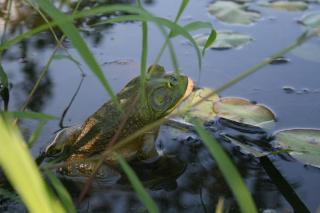Wetlands

The Importance of Wetlands
Wetlands are some of our most biologically diverse habitats and provide enormous benefits to our community. They are defined by three characteristics: hydric soils, hydrophytic vegetation, and hydrology. Wetland indicators include the presence of water at or near the soil surface, swollen tree trunks, and water or silt-stained leaves or plant stems. All wetlands have saturated soil for at least part of the growing season, and all support plants adapted to wet conditions. There are many types of wetlands including forested wetlands, marshes, swamps, vernal pools, bogs, fens, shrub wetlands, wet meadows, beaver meadows, and salt marshes.
Wetlands have many important functions; here are some of the most significant:
- Protect water quality
- Store floodwaters
- Trap sediment and nutrients
- Recharge groundwater
- Host habitat for fish and wildlife
- Host rare plants
- Provide economic and recreational opportunities
Conservation Commission Role
In New Hampshire, Conservation Commissions are charged with protecting watershed resources in our respective communities. Given the importance of wetlands, our Commission serves as an important advisory body and conduit of information for the NH Department of Environmental Services (DES) Wetlands Bureau, our local Planning Board, Town Council, and other Town committees and boards, Newmarket Town Staff, and landowners and residents. Specifically related to wetlands, the Conservation Commission
- Reviews and comments on Dredge and Fill Wetlands Permit Applications
- Prepares maps for designation of Prime Wetlands (these were adopted in 2004 and are on the Planning Board webpage. These high value wetlands have added protection in our zoning ordinance
- Reviews Sand and Gravel Excavation Permits
- Protects wetlands and waters on Town conservation lands through management planning and land stewardship
- Helps protect drinking water, streams and rivers, aquatic habitat, and all wetlands; improve water quality; and enhance stream crossings to allow safe passage for fish and wildlife
- Promotes awareness and conservation of freshwater and tidal wetlands through workshops, volunteer workdays, and other programs
Useful Links
- NH DES Permit Information and Forms
- NH DES Wetlands Permit Planning Tool
- NH DES OneStop Data Mapper
- NH Aquatic Restoration Mapper
- USGS Stream Stats Watershed Mapping
- USFWS Wetlands Mapper
